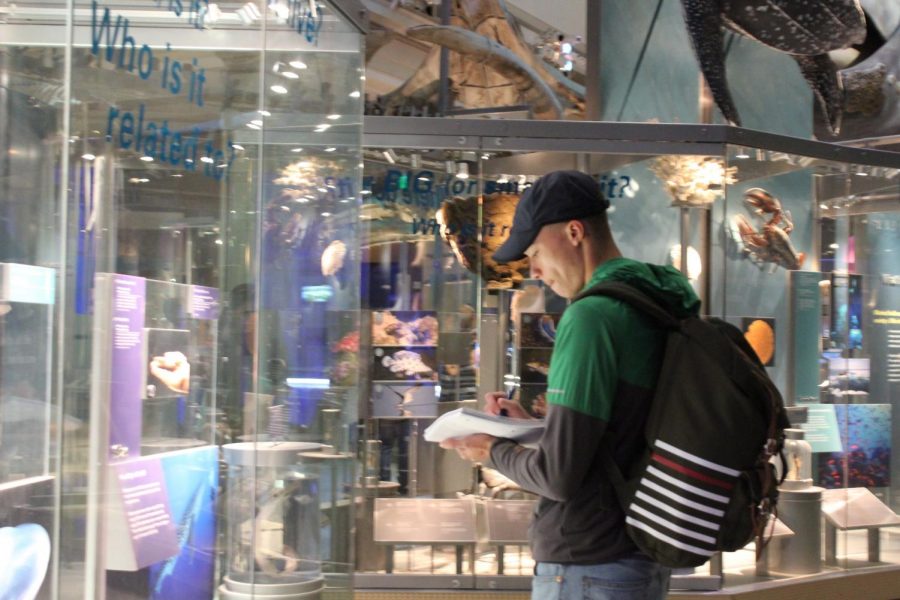Natural History Museum
November 10, 2017
The Natural History Museum, located on the Washington D.C. Mall, is one of the many Smithsonian Institutions available to visit for free in the capital. Informative, interactive, and aimed towards families with kids, the museum aims to inspire creative thought and a thirst for knowledge.
With over twenty different exhibits, including dinosaur fossils, gemstones, and insects, the Natural History Museum displays a plethora of different, but equally fascinating, artifacts. All of the interesting exhibits are laid out in an organized manner, making it easy to navigate around the two floors. Although there is so much to see, the layout of the exhibits is compact enough as to not overwhelm visitors.
Guests are able to make a day out of the museum to just walk around and learn. There is an advantage for families with kids, the exhibitions are not too heavy so that they are tiring, but information-dense enough to stimulate and educate young kids. The displays are full, varied, interesting and presented in a way that keeps the attention of the viewer. The museum is easy to access, free and has so many sections to keep the young and old interested for hours.
This Smithsonian institution also includes an interactive app that, when connected to the exhibits, allows the viewer to see features invisible to the average viewer. Games are available in almost every exhibit, ranging from meteor simulators and earthquake creators, to dinosaur exploration. The games are a fun way to experience a more in-depth but exciting aspect of each display.
If you are looking for a more traditional art gallery feel, the photography gallery displays Nature’s Best Photography: Windland Smith Rice International award winning photography, ranging from amateur fifteen year-olds, to seasoned professionals. In the other galleries, informative timelines put into perspective the time period of the displays and show just how old some of the fossils are. In the insect room, volunteers allowed visitors to hold some of the live bugs, such as the giant grasshopper or the tarantula. A great deal of research on the various species of insects is conducted behind the scenes in special laboratories at the museum.
Entomologists – people who study the branch of zoology concerned with insects – research, identify, and collect new insects and define their relationships with the rest of the natural world. The entomologists act directly with the museum and work to broaden its displays collecting data and studying in its labs. An observation window provides a view in the labs, supplying a behind-the-scenes into the research for visitors. The museum also displays The Hope Diamond. Donated in 1958, this blue diamond from 17th century was originally owned by King Louis XIV of France. Rory, an eighth grader from Massachusetts said that the gemstone exhibit was her favorite because of its beauty. The Natural History Museum is a great way to spend a rainy day, or any day for that matter, in DC. Families with younger kids especially benefit from the equal amounts of learning and leisure. Not only children, but also parents and people of all ages can enjoy all that the museum has to offer, because the many exhibits will keep a visitor’s attention for hours.
